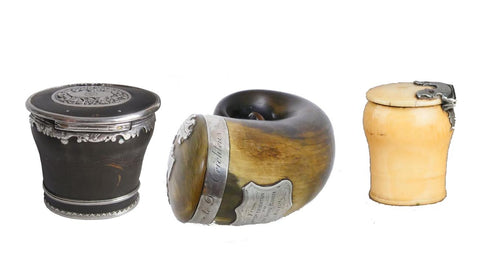Scotts and the Mull

As soon as it was introduced to Great Britain, tobacco in general and snuff, in particular, became an integral part of Highland customs, however the origins of the habit are as obscure as those of the kilt. Reminiscent of the tribes of the Orinoco or Amazon deltas, a visitor to any Scottish clan that populated the damp and isolated part of Europe would be welcomed invariably with a pinch of snuff.

Assumed to have been brought to the Scots by the Irish as early as 1636 with records of regular tobacco trade between the two peoples. The act of snuffing was referred to as 'smeeshin' and was believed to 'mightily refresh the brain'. The word is derived from the Gaelic smuiden, meaning dust. It is likely that the preference for snuff was based on practical considerations. The preference of powder over a lit pipe is understandable with such a moist climate, as keeping a pipe alite was quite difficult. The unique invention to keep their powder dry was the introduction of the mull, a recipient with a hinged lid that permitted access without abandoning protection from the elements. Snuff mulls were traditionally made from a variety of materials including wood, silver, porcelain and even from sheep’s horn that were carried in a pocket or hung from a belt for easy access. Today, snuff mulls are often collectors' items and are prized for their historical significance and decorative value.

Snuff tobacco permeates Scottish lore with the tale of the chieftain Hamish Ich McFerr, whose ghost appeared at his successor's deathbeds. The appearance was bloodied from battle and demanded a 'smeeshin from the scuttermull'. The dose was provided along with the mull and other hereditary items that were passed to the dying man's successor. Accompanying this fable is the rather righteous trait of trade so commonly associated with the Scots as they were among the first investors in the new commodity from the Americas that provided both cultural and financial gains to this northern climb.
